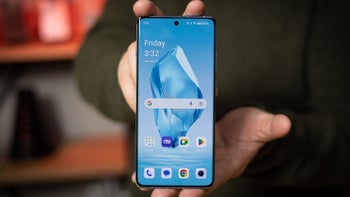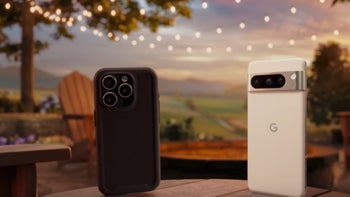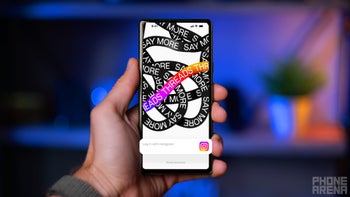Privacy vs. Fun vs. Choice: How Apple, Google, and Samsung Approach AI in phones

Now that Apple has revealed its own approach to Artificial Intelligence (AI), or as the company calls it, “Apple Intelligence”, we can finally compare it to the two other major players, Samsung and Google. For the most part, AI integration seems to be mostly similar across the platforms it has been introduced to, but are there any differences in the way all three companies are integrating AI into their phones?
There are two scenarios here, the first one being an equilibrium sort of state where Apple, Google, and Samsung offer the same kind of services. The other scenario is for each company to use this opportunity and stand out from the competition, making its product unique in an era when, frankly, phones have become clones of each other.
Currently, on the surface, it appears as if we are witnessing the generalization approach, with each tech giant offering a set of AI features that seem to be the norm, the foundation. However, if we take a closer look at the aspects each company values more, we can notice the vision they have for AI, even this early in the game.
Apple might have abstained from the term “artificial intelligence” , but for all intents and purposes, that is what “Apple Intelligence” refers to. And, rather unsurprisingly, we got to see the same AI features that we have already seen from the competition.
There are writing tools, one of which is the phone’s ability to proofread text you have written in any app, like G-mail or Notes. Or the ability to restyle the text to sound more professional, or in some other tone, so that it is better suited for a certain audience. Apple has even added a “Clean Up” tool in the Photos app, which basically does the same job as Google’s Magic Eraser, removing unwanted objects inside a photo.
But none of these new features would have been at least somewhat unique if Apple had not done something different to stand out. The road the company took was a bit predictable, but still impressive: Privacy. Apple prides itself on offering a high level of privacy and security with the iPhone (and its other products), and it has implemented AI with that core value in mind.
To a large extent, Apple is able to achieve higher privacy by making almost all of the AI actions carried out on-device. This means no one else can see what you ask or what the AI finds.
Even in cases when the prompt is too complex or fringe for an on-device solution, Apple has created its own cloud servers made with Apple silicon to which the phone would connect for the additional horsepower.
If that is still not sufficient, the phone will then send users a prompt, asking whether they would be okay if it asks ChatGPT (GPT-4o) for some help. This is an action that cannot be turned off or defaulted in any way, users will be prompted for permission each time.
So, for now at least, we can say that Apple’s unique approach to AI is to make it as private and secure as possible. AI is still a worrying word for many, and Apple wants to create a sense of comfort and safety when talking about this topic, which is probably one of the reasons it avoids the exact word or abbreviation. This is just the first step, and it is what (for now) sets Apple apart.
Google was the first phone manufacturer to put the term AI at the forefront as a main selling point for its phones. Phones have had AI features for a while but it is the Pixel 8 series that truly showed us where flagship phones are headed.
The AI we see in Pixel phones is all about convenience and giving creative power to the user. The competition might have adopted similar features, but it is Google that first introduced things like the Magic Editor, which can manipulate a photo like a Photoshop professional, but in an instant and with a single tap.
Another great example is the Audio Magic Eraser feature, which gets rid of specific sounds inside a recorded video to make others stand out more. I mean, if this does not scream James Bond gadgets I don’t know what does!
And can we talk a little about Best Take? You know, that feature that lets you choose between multiple face expressions for each person inside a photo, so that everyone looks their best. I mean, yeah, it can be a bit weirdly unsettling sometimes, but it actually works like a charm. If we are talking about creative use of AI, it is exactly features such as these that put Google in the lead.
In fact, creative is the one word that best describes Google’s approach to artificial intelligence, especially when it comes to the Pixel phones. Useful implementation of AI into daily life makes life easier and more fun for the user—that is Google’s angle when we talk about AI on our phones, and that is what I expect (and want) from future Pixel devices too.
Samsung has traditionally given its Galaxy phone users the freedom to choose how they want their phone to act, work, and feel, all under the umbrella of offering more convenience. The way the company has introduced AI to its Galaxy phones carries these principles too.
Let’s take the Samsung Internet app and its new ability to summarize articles. Of course, summary of text is nothing unique in the world of AI features, but Samsung goes a step further and gives you a choice of how you want the AI to act: do you want a “Standard” summary that’s more compact, or do you want a “Detailed” one with more context?
There’s also Live Translate, which translates different languages during a phone conversation on the fly, which the person on the other end of the phone hears in the form of a generated voice. That’s cool, but what makes it even more cool is that you can go into settings and adjust the feature, choosing between different voices for the other person to hear, the speed at which the voice talks, whether you want both your language and their language to be sent or just yours, and more.
So, what I am getting at here is that Samsung is using AI on its Galaxy phones, but it is trusting you to tailor it to your personal preferences and liking. You feel more appreciated as a user when utilizing Galaxy AI features, simply because of the level of control you have over them. Galaxy AI, like much of the Samsung experience, is about the user’s convenience and the freedom to have more control over it.
In the race to integrate AI into smartphones, Apple prioritizes user privacy with on-device processing and transparency about cloud usage. Google focuses on empowering users with creative tools like photo editing and video noise reduction. Samsung emphasizes user control by offering customizable AI features that cater to individual preferences.
In truth, all three approaches are not AI-specific, but extensions of each company’s core beliefs and the foundation on which it builds its products. What’s different, though, is that AI is a brand new playground that allows manufacturers to exercise their vision with more creativity and freedom.
Currently, on the surface, it appears as if we are witnessing the generalization approach, with each tech giant offering a set of AI features that seem to be the norm, the foundation. However, if we take a closer look at the aspects each company values more, we can notice the vision they have for AI, even this early in the game.
Apple AI
Privacy and Security
Apple might have abstained from the term “artificial intelligence” , but for all intents and purposes, that is what “Apple Intelligence” refers to. And, rather unsurprisingly, we got to see the same AI features that we have already seen from the competition.
But none of these new features would have been at least somewhat unique if Apple had not done something different to stand out. The road the company took was a bit predictable, but still impressive: Privacy. Apple prides itself on offering a high level of privacy and security with the iPhone (and its other products), and it has implemented AI with that core value in mind.
To a large extent, Apple is able to achieve higher privacy by making almost all of the AI actions carried out on-device. This means no one else can see what you ask or what the AI finds.
Even in cases when the prompt is too complex or fringe for an on-device solution, Apple has created its own cloud servers made with Apple silicon to which the phone would connect for the additional horsepower.
So, for now at least, we can say that Apple’s unique approach to AI is to make it as private and secure as possible. AI is still a worrying word for many, and Apple wants to create a sense of comfort and safety when talking about this topic, which is probably one of the reasons it avoids the exact word or abbreviation. This is just the first step, and it is what (for now) sets Apple apart.
Google AI
Fun and Creativity
Google was the first phone manufacturer to put the term AI at the forefront as a main selling point for its phones. Phones have had AI features for a while but it is the Pixel 8 series that truly showed us where flagship phones are headed.
The AI we see in Pixel phones is all about convenience and giving creative power to the user. The competition might have adopted similar features, but it is Google that first introduced things like the Magic Editor, which can manipulate a photo like a Photoshop professional, but in an instant and with a single tap.
Another great example is the Audio Magic Eraser feature, which gets rid of specific sounds inside a recorded video to make others stand out more. I mean, if this does not scream James Bond gadgets I don’t know what does!
And can we talk a little about Best Take? You know, that feature that lets you choose between multiple face expressions for each person inside a photo, so that everyone looks their best. I mean, yeah, it can be a bit weirdly unsettling sometimes, but it actually works like a charm. If we are talking about creative use of AI, it is exactly features such as these that put Google in the lead.
Galaxy AI
Convenience and Choice
Samsung has traditionally given its Galaxy phone users the freedom to choose how they want their phone to act, work, and feel, all under the umbrella of offering more convenience. The way the company has introduced AI to its Galaxy phones carries these principles too.
Let’s take the Samsung Internet app and its new ability to summarize articles. Of course, summary of text is nothing unique in the world of AI features, but Samsung goes a step further and gives you a choice of how you want the AI to act: do you want a “Standard” summary that’s more compact, or do you want a “Detailed” one with more context?
There’s also Live Translate, which translates different languages during a phone conversation on the fly, which the person on the other end of the phone hears in the form of a generated voice. That’s cool, but what makes it even more cool is that you can go into settings and adjust the feature, choosing between different voices for the other person to hear, the speed at which the voice talks, whether you want both your language and their language to be sent or just yours, and more.
So, what I am getting at here is that Samsung is using AI on its Galaxy phones, but it is trusting you to tailor it to your personal preferences and liking. You feel more appreciated as a user when utilizing Galaxy AI features, simply because of the level of control you have over them. Galaxy AI, like much of the Samsung experience, is about the user’s convenience and the freedom to have more control over it.
Summary
In the race to integrate AI into smartphones, Apple prioritizes user privacy with on-device processing and transparency about cloud usage. Google focuses on empowering users with creative tools like photo editing and video noise reduction. Samsung emphasizes user control by offering customizable AI features that cater to individual preferences.













Things that are NOT allowed: